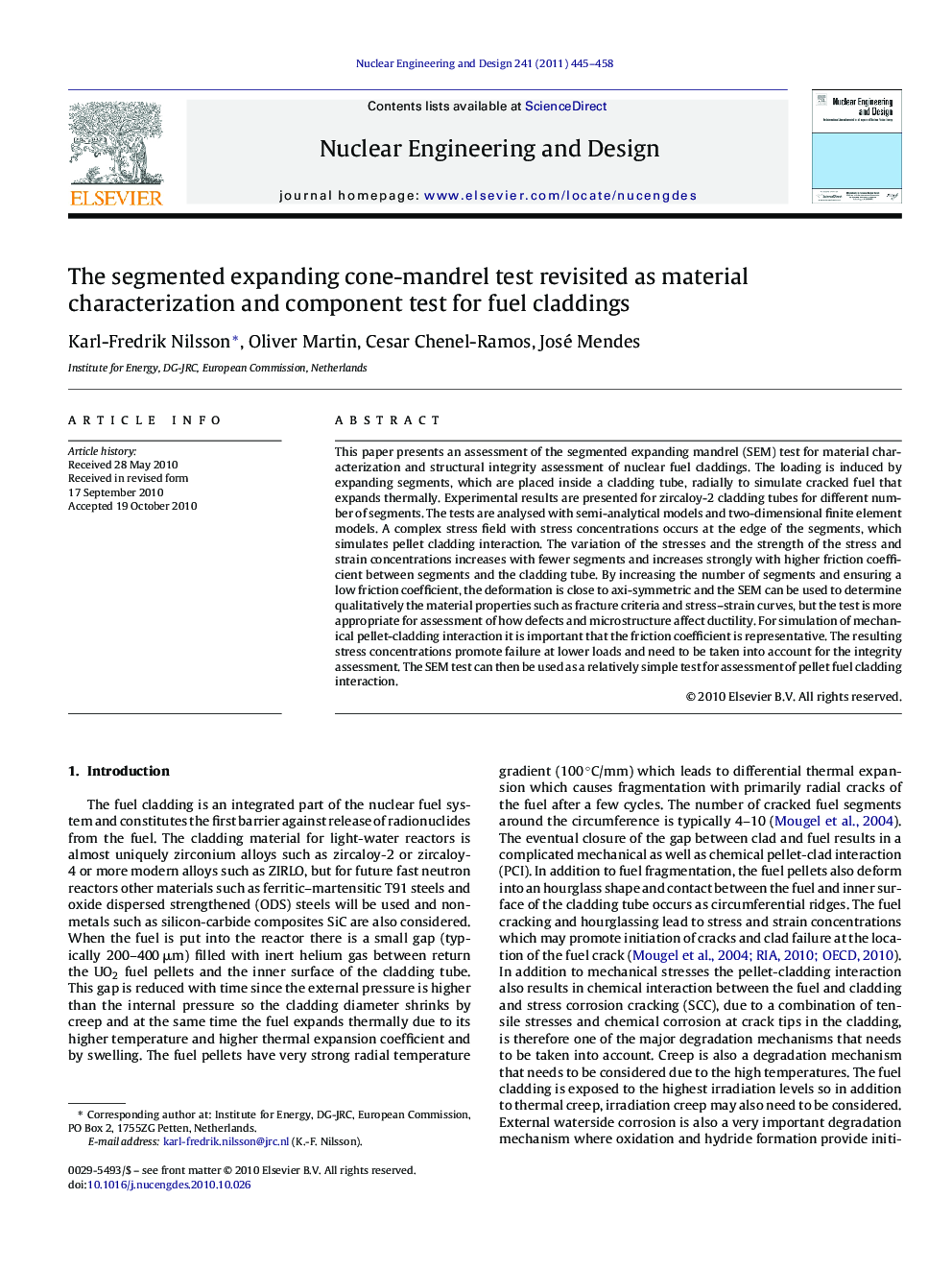| Article ID | Journal | Published Year | Pages | File Type |
|---|---|---|---|---|
| 298200 | Nuclear Engineering and Design | 2011 | 14 Pages |
This paper presents an assessment of the segmented expanding mandrel (SEM) test for material characterization and structural integrity assessment of nuclear fuel claddings. The loading is induced by expanding segments, which are placed inside a cladding tube, radially to simulate cracked fuel that expands thermally. Experimental results are presented for zircaloy-2 cladding tubes for different number of segments. The tests are analysed with semi-analytical models and two-dimensional finite element models. A complex stress field with stress concentrations occurs at the edge of the segments, which simulates pellet cladding interaction. The variation of the stresses and the strength of the stress and strain concentrations increases with fewer segments and increases strongly with higher friction coefficient between segments and the cladding tube. By increasing the number of segments and ensuring a low friction coefficient, the deformation is close to axi-symmetric and the SEM can be used to determine qualitatively the material properties such as fracture criteria and stress–strain curves, but the test is more appropriate for assessment of how defects and microstructure affect ductility. For simulation of mechanical pellet-cladding interaction it is important that the friction coefficient is representative. The resulting stress concentrations promote failure at lower loads and need to be taken into account for the integrity assessment. The SEM test can then be used as a relatively simple test for assessment of pellet fuel cladding interaction.
Research highlights▶ We examine the segmented cone mandrel test for nuclear fuel claddings tubes. ▶ The test is simple to perform only requires small specimens. ▶ It can be designed to determine basic material properties and simulate pellet-cladding interaction.
